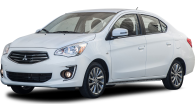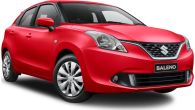Named after a South American capital city; designed in Europe and the USA, built in South Korea and fine tuned in Australia. Is it any wonder the importers say the fourth-generation Kia Rio will appeal to many buyers downunder?
The Kia Rio landed here in late 2011 and was joined by three-door hatch and four-door sedan variants midway through 2012.
VALUE
The Rio 1.4 S manual three-door hatch comes on to the market at $15,290, plus on-road costs, and is covered by Kia’s five-year, unlimited kilometre factory warranty. The Rio gets a decent audio unit with CD, radio and USB / AUX / iPod connectivity and four speakers. You get a lot of well equipped, cute looking car for a very modest price in the Kia Rio and we will be surprised if it doesn’t significantly increase sales numbers over the superseded model.
TECHNOLOGY
The base model three-door S we have just reviewed comes with a 1.4-litre petrol engine producing 79 kW of power at 6300 rpm and 135 Nm of torque at 4200 revs – that’s nine kW and ten Nm more than the 1.4 motor it replaces. The figures don’t seem to add up to much at first glance but the efficiency of modern engines has this unit performing perfectly well in the day-to-day urban environment and on the open road.
DESIGN
In design terms, the new Kia Rio leads from the front with its so-called ‘Schreyer’ chromed radiator grille, a nod to Peter Schreyer, the Chief Design Officer at Kia. Known as the Tiger Nose, Schreyer says: “Tigers are powerful, yet kind of friendly. The nose is three-dimensional – like a face, not just a surface with a mouth drawn on it. From now on, we'll have it on all our cars.”
Out the back, the hatch is distinguished by a roof-mounted spoiler and stylish lines. The result is a body that is identical to the five-door, offering the same dimensions and the same striking looks. ‘Tidy’ is the best way to describe the cabin interior, with minimal, but mostly, helpful information set out in an easy-to-read manner. Three large dials directly in front of the driver present speed, revs and fuel status.
The steering wheel, with tilt and telescopic adjustment, also carries cruise control and audio buttons, making for safe switching while on the move. The audio unit, with CD, radio and USB / AUX / iPod connectivity, features four speakers. Rear leg room is on the meagre side and hard plastic surrounds place the Rio well and truly in the cheap car segment. Which is fair enough – it is a cheap car.
SAFETY
Five-star crash safety is a Rio requirement with six airbags. A new Vehicle Stability Management program monitors active safety features such as ABS braking, stability and traction control, as well as the motorised power steering that can take over when stability reaches its threshold.
DRIVING
Acceleration off the mark is the one thing that drags the Rio 1.4 down, but only slightly. The test vehicle, a six-speed manual, was deceptive in its willingness to get a move on. If you ignore the gearshift indicator, which suggests you should go up a cog, it doesn’t do a great deal to improve real world performance, and probably increases fuel consumption and exhaust emissions.
On average the Rio manual used about seven to eight litres of fuel per hundred kilometres on suburban runs. This drops to an impressive five to six litres if you treat it carefully on open road trips. Kia Australia engineers had a major input into the new Rio’s ride and handling, shaking down each model in exacting conditions over 2000 km on the same stretch of road in and around the Hunter Valley north of Sydney. They also put them up against rivals from the light-vehicle segment.
Handling is sharp and well-controlled for a car in this class. However, the downside is that the ride may be firmer than some like on roughish surfaces. Try the car on that sort of road if comfort takes precedence over handling in your mind. The suspension is well sorted thanks to the aforementioned extensive Aussie shakedown, and brakes are on the sharp side but, with familiarity, on test became easier to handle. The hill hold is a feature welcomed by many sloppy drivers these days.
VERDICT
Generally, there was little to complain of with the Rio S three-door’s behaviour on the road except some above-average tyre noise on course bitumen.
MODEL RANGE
Kia Rio S 1.4-litre three-door hatchback: $15,290 (manual), $17,290 (automatic)
Kia Rio SLS 1.6-litre three-door hatchback: $19,990 (manual), $21,990 (automatic)
Kia Rio Si 1.6-litre four-door sedan: $21,690 (automatic)
Kia Rio S 1.4-litre five-door hatch: $16,290 (manual), $18,290 (automatic)
Kia Rio Si 1.6-litre five-door hatch: $18,990 (manual), $20,990 (automatic)
Kia Rio SLi 1.6-litre five-door hatch: $19,990 (manual), $21,990 (automatic)
Kia Rio S 1.4
Kia Rio S
Price: from $15,290
Warranty: 5 years/unlimited km
Crash rating: 5 stars
Safety: 6 airbags, ABS, Vehicle Stability Management program, stability and traction control
Engine: 1.4-litre 4-cyl 79kW/135Nm
Transmission: 6-speed manual, FWD; 4-speed auto
Dimensions: 4045mm (L), 1720mm (W), 1455,m (H)
Weight: 1131kg
Thirst: 5.7L/100km, 135g/km CO2
Kia RIO 2012: S
| Engine Type | Inline 4, 1.4L |
|---|---|
| Fuel Type | Unleaded Petrol |
| Fuel Efficiency | 5.6L/100km (combined) |
| Seating | 5 |
| Price From | $4,840 - $7,040 |
| Safety Rating |
|
Pricing Guides

Range and Specs
| Vehicle | Specs | Price* |
|---|---|---|
| S | 1.4L, Unleaded Petrol, 4 SPEED AUTOMATIC | $4,730 - $6,930 |
| S | 1.4L, Unleaded Petrol, 6 SPEED MANUAL | $3,850 - $5,610 |
| Si | 1.6L, Unleaded Petrol, 6 SPEED AUTOMATIC | $5,940 - $8,360 |








.jpg)









































.jpg)
